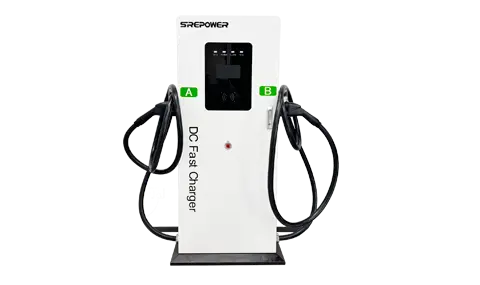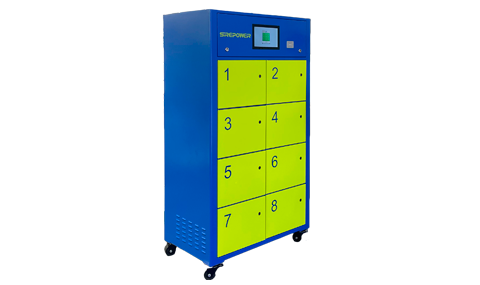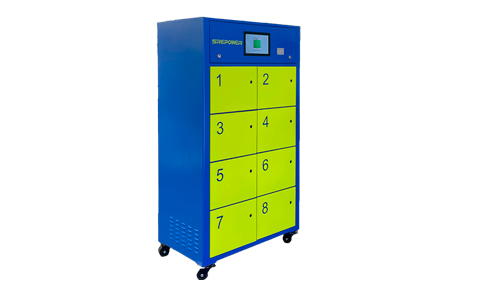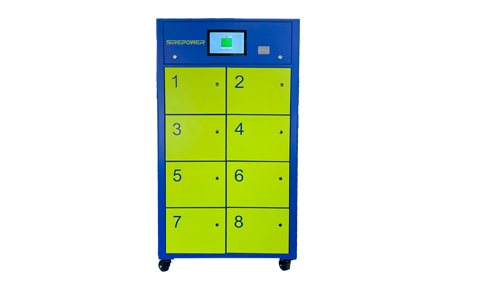What is the difference between AC charging stations and DC charging stations.
Charging principle of charging station
As we all know, charging stations are charging facilities for refueling electric vehicles, known as "off board chargers".
The charging station is fixed on the ground, using a dedicated charging interface and conducting method to provide AC and DC power for electric vehicles with on-board chargers, and has corresponding functions such as communication, billing, and safety protection. Simply scan the QR code or recharge with an IC card to use the charging station to charge your car.

After the electric vehicle battery is discharged, direct current is passed through the battery in the opposite direction to the discharge current to restore its working ability. This process is called battery charging. When charging a battery, the positive side of the battery is positively connected to the power source, and the negative side of the battery is negatively connected to the power source. The voltage of the charging power source must be higher than the total electromotive force of the battery.
A Brief Analysis of the Differences between AC Charging Stations and DC Charging Stations
Simply put, it means:
1. Different charging devices
AC charging stations require the use of on-board chargers for charging, while DC fast charging stations do not require these devices.
2. Different charging speeds
There is a significant difference in charging speed between the two. After discharging a pure electric vehicle (with a regular battery capacity), it takes 8 hours to fully charge it through an AC charging station, while it only takes 2-3 hours through a DC fast charging station.
3. Different fast charging capabilities
The communication charging station provides power input to the electric vehicle charger, but due to the small power of the on-board charger, fast charging cannot be achieved. A DC fast charging station is a power supply device that is fixedly installed outside an electric vehicle and connected to the AC power grid. It can provide DC power to the power batteries of non vehicle electric vehicles. DC charging piles can provide sufficient power, with a wide range of input voltage and current adjustment, and can meet the demand for fast charging.
A Brief Analysis of the Differences between AC Charging Stations and DC Charging Stations
An expanded understanding would be:
1. Charging station charging method
There are two charging methods: constant current charging and constant voltage charging.
1) Constant current charging method
Constant current charging method is a charging method that maintains the same charging current intensity by adjusting the output voltage of the charging device or changing the series resistance with the power battery. The control method is simple, but due to the fact that the acceptable current capacity of the battery gradually decreases with the charging process, in the later stage of charging, the charging current is mostly used for electrolyzing water, producing gas, and causing excessive exhaust gas. Therefore, the stage charging method is often chosen.
2) Constant voltage charging method
The voltage of the charging power supply remains constant throughout the entire charging time, and as the voltage at the battery terminal gradually increases, the current gradually decreases. Compared with constant current charging method, its charging process is closer to the charging curve. Fast charging with a constant voltage, due to the low electromotive force of the battery in the early stage of charging, the charging current is large. As charging progresses, the current will gradually decrease, so a simple control system is required.
A Brief Analysis of the Differences between AC Charging Stations and DC Charging Stations
2. The difference between DC charging station and AC charging station
1) DC charging station
DC electric vehicle charging station, commonly known as "fast charging", is a power supply device that is fixedly installed outside the electric vehicle, connected to the AC power grid, and can provide DC power for non vehicle electric vehicle power batteries.
The input voltage of the DC charging station is three-phase four wire AC380V ± 15%, with a frequency of 50Hz, and the output is adjustable DC power, which directly charges the power battery of the electric vehicle. Due to the three-phase four wire power supply used by the DC charging station, sufficient power can be provided, and the output voltage and current adjustment range is large, which can meet the requirements of fast charging.
DC charging stations (also known as off board chargers) directly output DC electricity to charge the on-board battery, with high power (including 60kw, 120kw, 200kw, and even higher) and fast charging speed. Therefore, they are generally installed in charging stations next to highways or dedicated car charging stations.
2) Communication charging station
AC electric vehicle charging station, commonly known as "slow charging", is a power supply device that is fixedly installed outside the electric vehicle and connected to the AC power grid, providing AC power for the electric vehicle on-board charger (i.e. the charger fixedly installed on the electric vehicle).
The communication charging station only provides power output and does not have charging function. It needs to be connected to a car charger to charge the electric vehicle. It is equivalent to just playing a role in controlling the power supply.
The AC pile outputs single-phase/three-phase AC power, which is converted into DC power by the on-board charger to charge the on-board battery. The power is relatively small (with 7kw, 22kw, 40kw, etc.), and the charging speed is generally slow. Therefore, it is generally installed in one's own parking space, residential area, parking lot, etc.
Hot Keywords:
Fast charging
AC Column Charging Post
AC Charging Pile







 WhatsApp Contact
WhatsApp Contact